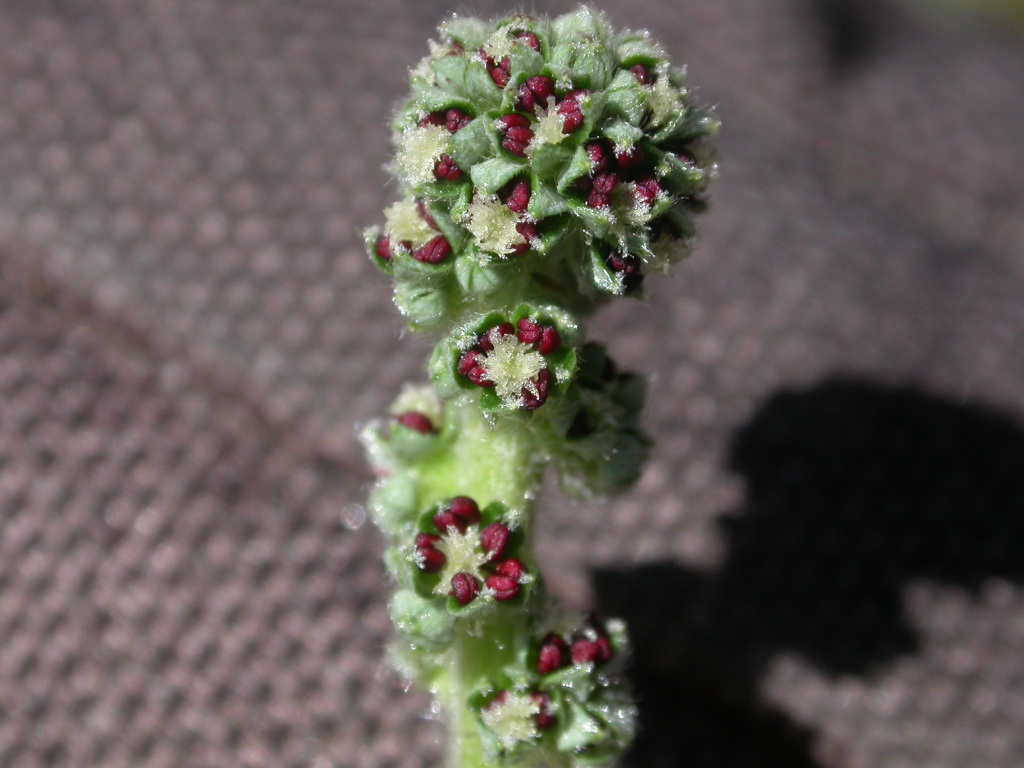Acaena ×ovina
A.Cunn. Sheep's BurrErect or ascending perennial herb (11–)25–60 cm high; branches moderately pubescent with spreading or appressed hairs. Leaves 11–29-foliolate, narrowly obovate to oblanceolate, mostly 8–12 cm long; leaflets obovate, the largest 5–22 mm long, 3–10 mm wide, margins deeply lobed or serrate, flat or recurved, upper surface moderately appressed-pilose, lower surface densely and evenly appressed-pilose; stipules linear, lanceolate or triangular, 1–5 mm long. Inflorescence an interrupted cylindric spike, or rarely in heads with several flower clusters below; peduncles pilose; sepals 4–5; stamens 3–4(–5), dark purple; style 1. Fruiting hypanthia ovoid, not ribbed, glabrous or pilose; spines 18–35, unequal, 3–6 spines 2–4 mm long, 15–30 spines 0.5–2 mm long, not thickened at base. Flowers and fruits Sep.–Apr.
LoM, Wim, GleP, VVP, VRiv, MuF, GipP, OtP, WaP, Gold, CVU, GGr, DunT, NIS, EGL, EGU, HSF, HNF, OtR, Strz, MonT, VAlp. Also WA (?introduced), SA, Qld, NSW, Tas. Naturalized in New Zealand. Largely co-extensive with other spicate Victorian Acaena species.
Apparently a hybrid between Acaena agnipila and A. echinata (Orchard 2018). Orchard (1969) recognized 2 varieties- var. ovina (glabrous fruit) and var. velutina (pilose fruit), not formally distinguished here. Both fruit forms have been recorded for Victoria.
Jeanes, J.A.; Jobson, P.C. (1996). Rosaceae. In: Walsh, N.G.; Entwisle, T.J., Flora of Victoria Vol. 3, Dicotyledons Winteraceae to Myrtaceae, pp. 556–585. Inkata Press, Melbourne.
 Spinning
SpinningOrchard, A.E. (1969). Revision of the Acaena ovina A.Cunn. (Rosaceae) complex in Australia.. Transactions of the Royal Society of South Australia 93: 91–109.
Orchard, A.E. (2018). How many spicate species of Acaena are there in Australia?. Australian Systematic Botany Society Newsletter 174: 12–14.
